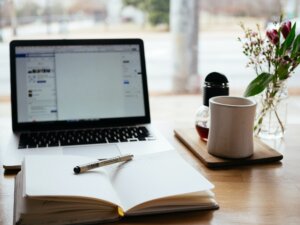 A client told me recently how he begins preparing for a future presentation. “When I know I am going to give a presentation in the future,” he says, “I place a yellow pad on my desk, right where I see it every day. Whenever I have an idea, or come across a piece of information that relates, I jot it down there. By the time I am ready to put my presentation together, everything I need is already there.”
A client told me recently how he begins preparing for a future presentation. “When I know I am going to give a presentation in the future,” he says, “I place a yellow pad on my desk, right where I see it every day. Whenever I have an idea, or come across a piece of information that relates, I jot it down there. By the time I am ready to put my presentation together, everything I need is already there.”
Good tip, yes? What is so great about this method is its simplicity and its visibility. Once you made a conscious decision to start gathering information on a given topic, you will likely come across many ideas that relate. Making it easy to capture them is key.
A variation of this method is making some kind of mind map. I often take an oversized sheet of paper and draw my map so I can begin to see the whole presentation at a glance. The oversized paper gives me plenty of space to sketch, doodle, and write. I can see how much time to devote to each section of the presentation before any final decisions about content are made.
If you prefer a slightly more high-tech version of the yellow pad, try another thing I like to do. Use a note program on your computer, smartphone, and tablet, storing them in the cloud. This way, if your inspiration strikes on your commute, or at the gym, you can add it to your electronic note pad, and find it there when you arrive at the office and log in. (Personally, I find these notes a little tidier than my hand-written notes, but that is another story.)
Another colleague gathers her notes on OneNote, organized by task or project. Some people love Evernote, where they can clip and add photos, graphics, and clippings found anywhere online. Some people are starting to use Flipboard or Pinterest in similar ways. Just be sure to select the appropriate level of privacy before compiling all your notes on these sites.
If you are a tactile learner, you might even use a simple file folder, in which you can stash hand-written notes, clippings, or other printed material. Some speakers keep notebooks or folders with stories, metaphors, and quotes they could add to a presentation — a folder would be a great place to keep them handy.
No matter which method you choose, planning ahead for your presentation and beginning to collect ideas and data makes a lot of sense. Choose one or more of these and give it a try. Anything is probably better than avoiding the matter until the last minute and then scrambling for ideas.
What do you do to gather ideas for your presentations? One of these, a combination, or something else altogether? I would love to hear what works for you.
Author Gail Zack Anderson, founder of Applause, Inc. is a Twin Cities-based consultant who provides coaching and workshops for effective presentations, facilitation skills for trainers and subject matter experts, and positive communication skills for everyone. She can be reached at [email protected].
Web site: www.applauseinc.net
Blog: www.managementhelp.org/blogs
Twitter: @ApplauseInc
 Sections of this topic
Sections of this topic
















